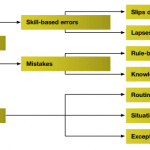
When using a computerized maintenance management system (CMMS), proper naming conventions are important to its success. Although it may take time in the upfront planning phase to define IDs for assets, parts, resources, maintenance procedures, etc., the outcome will be well worth the extra effort. Appropriate CMMS naming conventions provide a streamlined process for easily finding information and reporting.
While a state of the art CMMS system provides extensive query capability by most data fields, it still makes sense to think about and craft proper naming standards. Your CMMS vendor should be able to provide recommendations that have stood the test of time and worked well for their customers. Most important to the success of a streamlined and efficient system is to document your organization’s conventions in the maintenance standard operating procedures (SOPs) and provide proper training on the SOPs, along with the software training provided by your CMMS vendor. Once users know the established standards and how to use their CMMS system, finding needed information is a snap.










